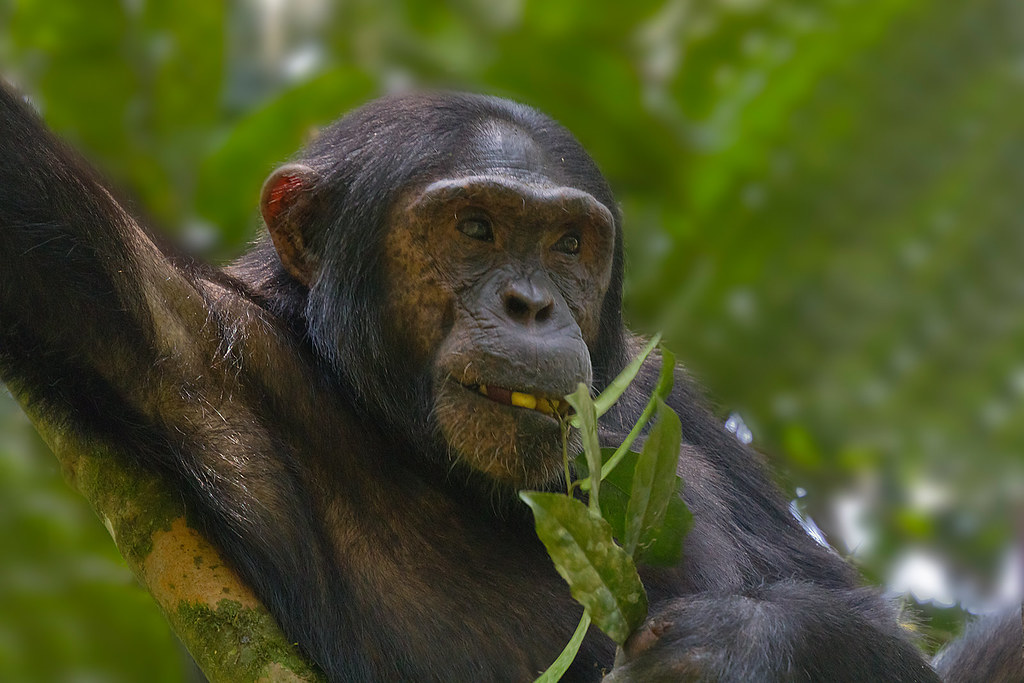Chimpanzee Habituation in Rwanda Vs Chimpanzee habituation in Kibale
Chimpanzee Habituation in Rwanda Vs Chimpanzee habituation in Kibale, Chimpanzee habituation projects are vital for understanding and conserving primate species. This essay compares the chimpanzee habituation processes in Rwanda, particularly in the Nyungwe Forest National Park, and in Uganda’s Kibale Forest National Park. The discussion will focus on the methods used in both locations, key individuals involved in the research and conservation efforts, and the broader implications for wildlife tourism and conservation strategies.
In Rwanda, chimpanzee habituation has taken a significant turn in the past two decades, particularly with the development of ecotourism. The Nyungwe Forest National Park, established in 2004, has some of the last remaining montane rainforests where chimpanzees reside. The habituation process in Rwanda is predominantly conducted by the Rwanda Development Board in collaboration with several conservation organizations. This approach emphasizes the synergy between scientific research and sustainable tourism. The habituation process in Nyungwe involves gradually introducing humans to chimpanzee groups. Researchers and guides spend several hours daily observing the chimps, allowing them to acclimatize to human presence over time.

Contrastingly, Kibale Forest National Park has been a prime location for chimpanzee research since the 1990s. It is often referred to as the primate capital of the world due to its diverse wildlife. The habituation process here has been influenced by the long-term research initiatives led by individuals like Dr. David Watts and Dr. John Mitani. Their studies not only focus on chimpanzee behavior but also on the ecological dynamics at play within the forest. In Kibale, the chimpanzees are habituated by field assistants who work closely with researchers to monitor social interactions and group dynamics, providing them with an understanding of their needs and behaviors.
Both areas share the goal of habituating chimpanzees for tourism and research but employ different methodologies and emphasis. Rwanda prioritizes community involvement and the integration of tourism into conservation strategies, which creates job opportunities and promotes local economic development. This integration has led to a successful model where tourists participate in guided tours, generating revenue that contributes to conservation efforts.


On the other hand, Kibale National Park’s habituation process leans heavily on research to drive conservation practices. While tourism is also important here, the emphasis lies on longitudinal studies that provide in-depth insights into chimpanzee life. This scientific approach has resulted in the publication of numerous research papers, showcasing the social behaviour, communication patterns, and tools used by these primates. Such research has raised awareness about the critical role chimpanzees play in their ecosystems.
The impact of habituation extends beyond the individual chimpanzees and the researchers. In Rwanda, the successful introduction of tourists to chimpanzee populations has had profound implications for national policy. The government of Rwanda has invested in conservation efforts that not only protect chimpanzees but also promote biodiversity. This reflects a growing recognition of the importance of preserving endangered species within the context of an economically viable tourism sector.
In Kibale, influential researchers have developed local training programs for park rangers and community members. These initiatives help to build a conservation ethic that emphasizes the importance of protecting primates as part of Uganda’s natural heritage. Partnerships with local communities are crucial because they wield significant influence over the success of conservation efforts. By fostering a sense of ownership, these programs encourage local residents to regard chimpanzees as beneficial to their livelihoods rather than as threats.
The perspectives on chimpanzee habituation vary greatly between these two locations. In Rwanda, the emphasis on direct human interaction with chimpanzees fosters tourism and economic growth. This leads to concerns regarding the potential stress on the chimpanzee populations. Some researchers argue that increased human presence could disrupt their natural behaviours. As a response, Rwanda has established strict regulations governing the number of visitors and the conditions under which chimpanzees can be observed.
Conversely, in Kibale, the focus on research-driven approaches yields a more cautious view of caution with human interaction. Researchers in Kibale argue for a paradigm that prioritizes scientific understanding of chimpanzee behaviour before increasing touristic engagement. This methodology places less pressure on animal welfare and prioritizes their needs and habitat conservation.
Looking towards the future, both Rwanda and Kibale face significant challenges regarding climate change, habitat destruction, and the effects of increasing human populations. The future of chimpanzee habituation in both locations will depend on maintaining the delicate balance between conservation, research, and tourism. Continuing education for local communities on the importance of preserving chimpanzees and their habitats will be crucial.
To sum it up one can conclude that, the processes of chimpanzee habituation in Rwanda and Kibale Forest National Park illustrate the diverse approaches to wildlife conservation. While Rwanda’s model leans towards tourism development, Kibale prioritizes research initiatives. Both methodologies reveal the importance of integrating local communities into conservation strategies. Collaborative efforts will be essential in ensuring the survival of chimpanzees in the face of evolving environmental challenges. The shared goal of both regions is to foster a deep understanding of chimpanzees while ensuring their preservation for future generations.


